I’m tempted to call this a fly tying book with an attitude ... and I mean that in a good way
Updated or edited 1 months ago
English fly fisher and artist Charles Jardine has written the preface to this book, and he starts it with the text “This is a serious book about a serious subject ...”, and he is right. This is indeed a serious book, one that doesn’t skimp or take its subject lightly.
But that doesn’t make it a boring book.
It might not be laugh-out-loud (which would also be a little odd), but the authors do have their tongues in their cheeks in a very British manner, and they brought a smile to my face more than once thanks to the understated irony and very distinct opinions found throughout the book.
The opinions are why I call it a book with an attitude, The two authors certainly have their opinions, and don’t hesitate expressing them, sometimes in a very direct, almost insulting way.
Like “Politically correct beliefs in fly fishing have in the past given rise to Xerophily (the love of dry things) which has led to people being Xeronormative (whishing to impose a rule of dryness on others), or even Wettist (driven by a hatred of wet things)”.
Xeronormative
(whishing to impose a rule of dryness on others)
This intro to the chapter “The Driest Possible Approach” made me laugh. It underscores what I mean about irony and tongue-in-cheek humor, and at the same time almost forms a mission statement for the book, which again and again questions the traditional approach to tying and fishing dry flies.
One word that appears repeatedly in the book is vulnerability – the fact that some naturals are vulnerable, unable to escape, and therefore are a preferred food for fish feeding in the surface.
Most hatching insects strive to transform from submerged to flying insect as quickly as possible, and the classic dun floating perfectly on the surface while drying its wings and getting ready to fly off, is a fleeting state. The insect’s goal is to get airborne as soon as possible.
Of course it can be caught by the fish during this process, but other stages are way longer lasting, like a nymph stage, and statistically pose a much greater risk to the insect.
The epitome of the traditional dry fly imitation – the hatching insect – ideally only lasts a short moment, and even though many anglers consider it the main target of the rising fish, other situations most likely offer way better opportunities for the fish – and, because of this, for the angler and fly tyer.
Damaged, malformed, or stuck insects – the vulnerable ones that fail to emerge or fly off properly – are much easier for trout to catch. That’s what we should be looking at when tying imitations.
As the authors write “it is usually the small proportion of casualties and failed hatches that forms the dominant proportion of the trout’s intake.”
As you may have gathered by now, this is a book about imitating hatching insects and about trout fishing in streams and lakes. It’s not a general fly tying book, and its patterns mainly imitate the emerging, suspended and floating stages of insects, and there are only few nymphs in the traditional sense – although covered in a whole chapter on nymphs. But no beetles, ants or other terrestrials, and no streamers or lures either.
And that’s how it should be. Praise for keeping the focus!
After the introduction and “mission statement” in the beginning of the book (almost half of it, actually), the authors go on to list a bunch of patterns that live up to the aim of looking like the insects in their most vulnerable and attractive (to the fish, that is) stages. Rather than the well known dry flies – like mayflies in perfect condition – these patterns are more messy and irregular, asymmetrical and altogether pleasantly imperfect. Just as the authors preach they should be.
Both the patterns and the book as a whole is littered with great pictures showing naturals and imitations in great detail, and – as has become commonplace – there are plenty QR-codes all through the book, which lead to online videos showing various examples of insect and fish behavior.
The last part of the book is about the practical use of the flies, in other words finding the places to use them, selecting the right one and presenting it to the fish. It’s not a casting or fishing manual as such, but it does cover the fishing with enough depth to make sense, but without loosing focus.
If you read my book reviews regularly, you know that I often praise titles that take a different approach to their subjects, and this is a prime example of such a different approach. The book not only contains a wealth of highly original fly patterns, many which I haven’t seen before, but it also excels in arguing and explaining why these flies are the ones “that trout prefer”.
I have no reason to doubt this claim, because the case is made in a very convincing manner. It seems very well documented in text, photos and the accompanying videos, and the authors speak with the weight of a lot of practical experience when they present their arguments.
So, in other words, you get several great things in this book:
A well written and beautifully illustrated 400-page book.
A different approach to trout flies with very good arguments to why they work.
A ton of patterns that follow the philosophy outlined, most of them easy to tie. As an online intro to an electronic version of the book says: “... welcome to the world of disruptive, and in most cases simpler and scruffier fly tying.”
If you’re a stream fly fisherman and a fly tyer looking for fresh inspiration, look no further. This is a book for you – and one that I have no hesitation in honoring with a Global Class verdict.
- Log in to post comments

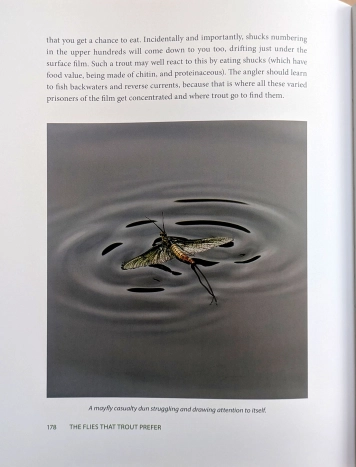
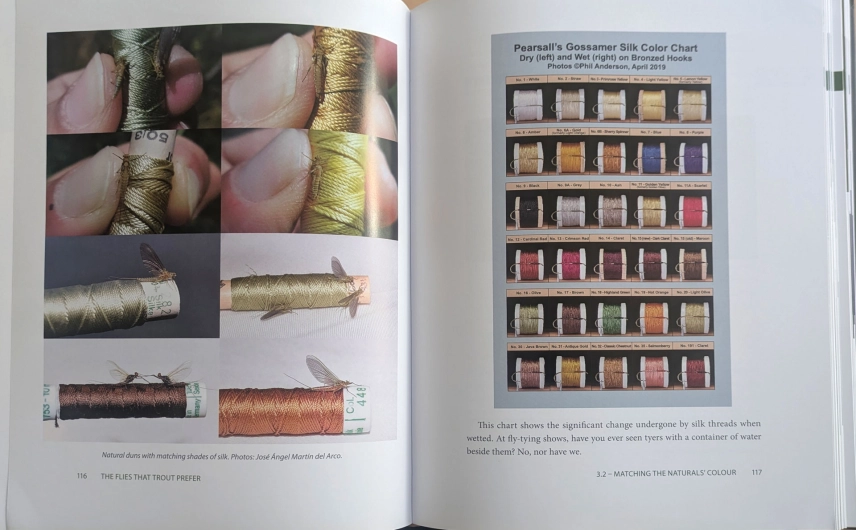

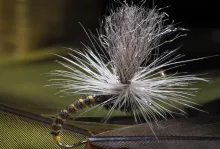
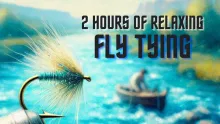

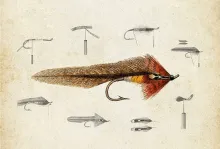


Different approach…yeah!
Martin, the way you describe this book has forced me to spend another penny lol. I can't wait to receive it, to leaf through it, to read it. Thank you for introducing your reader to it.
I'm costing you money!
Serge,
I hope you don't end up bankrupt with all the books I get you to buy!
No, seriously, you will like this one. It has a great approach to the subject, and features some really great (or at rather: efficient) looking flies.
Martin
You are making me happy
Lol! Martin, I love fly fishing and fly tying books, in fact I love books in general. In my little village, reading, tying flies , fishing and making maple syrup are all you can do…and that’s making me happy. You can’t even spend money. 😂
Serge